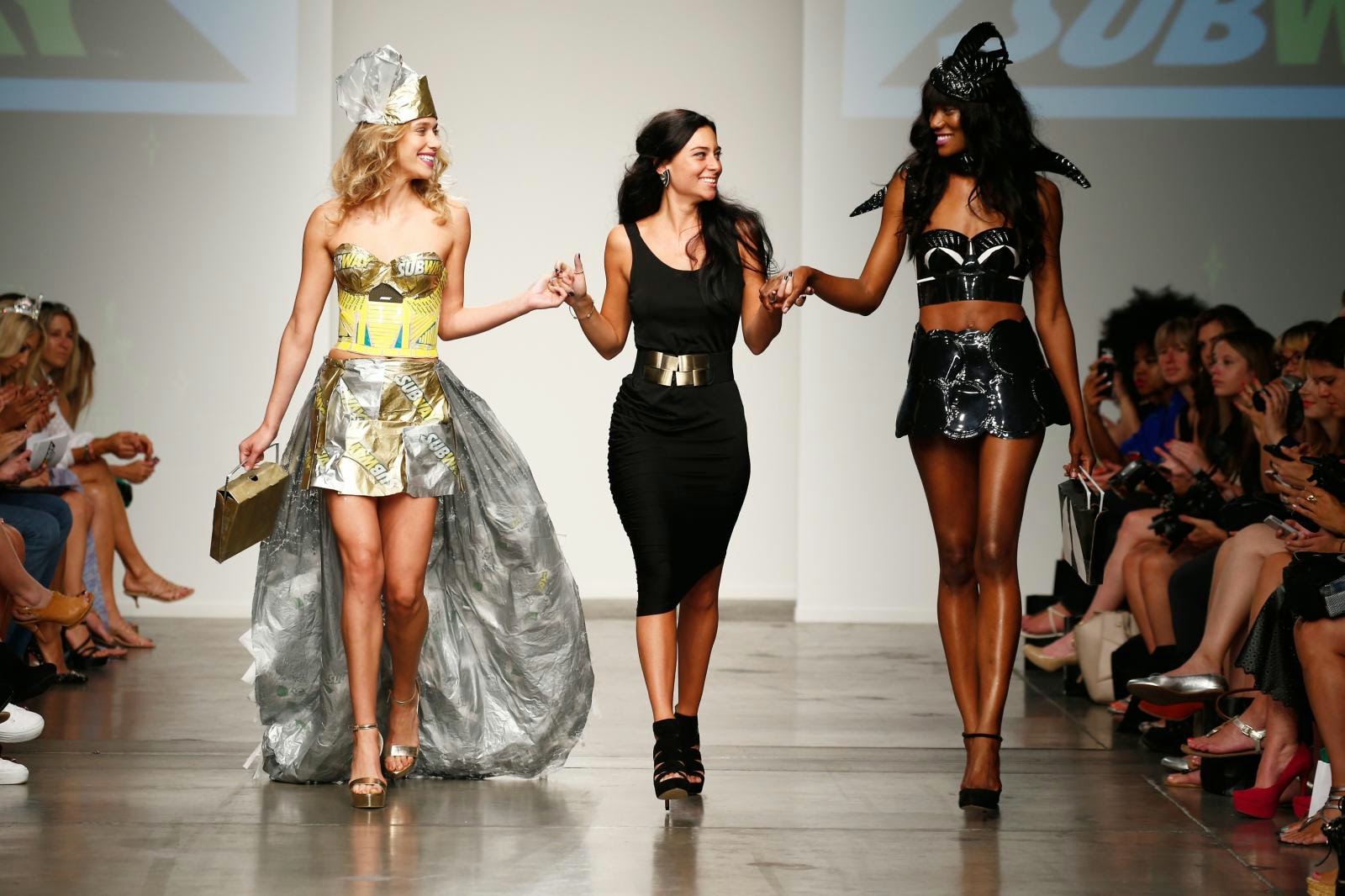The Ethical Fashion Forum has drawn up a set of 10 key criteria points for ethical fashion. This is to inform the fashion industry's official ethical fashion awards, the RE:Fashion awards, these include:
- Countering fast, cheap fashion and damaging patterns of fashion consumption
- Defending fair wages, working conditions and workers’ rights
- Supporting sustainable livelihoods
- Addressing toxic pesticide and chemical use
- Using and / or developing eco- friendly fabrics and components
- Minimising water use
- Recycling and addressing energy efficiency and waste
- Developing or promoting sustainability standards for fashion
- Resources, training and/ or awareness raising initiatives
- Animal rights
Fashion Promotion Sustainability - Sustainable fashion is also known as eco fashion. It is a part of the growing design philosophy and trend of sustainability. The end goal of this is to create a system that can be supported constantly in terms of the environmental and social responsibility.
Sustainable fashion is just one section within the sustainable design industry. This is where a piece is created and manufactured with care and acknowledgement towards the environmental and social impact it may have throughout the amount of time it is being used; this is known as its 'carbon footprint'. A quote by Vogue magazine in May 2007 sums up the fashion industries' hopes for sustainable fashion.
"Sustainable fashion appears not to be a short-term trend but one which could last multiple seasons."The fashion industry started of by giving back to the environment by donating a percentage of its' sales to charities. But their generosity and awareness has increased through using environmentally friendly materials, and socially responsible methods to produce their garments.
When using sustainable materials there are many factors to consider. One of which is renewing and sourcing fibre. The second is the process of how the raw fibre is turned into a textile garment. Thirdly is the working environment that employees are producing these materials in and finally, the material's 'carbon footprint'.
The different types of sustainable materials include:
Natural Fibres - Natural fibres are widely found in nature and are not petroleum based. These can also get categorised into two main groups: cellulose/plant fibres and protein/animal fibres.
Cellulose - Cellulose is also known as cotton. It is one of the most commonly grown and chemical-intensive crops in the world.
Protein - Examples of these are: wool, silk, angora, camel, alpaca, llama, vicuna, cashmere and mohair.
Manufactured - Manufactured materials are made from natural resources, such as: lyocell and polylactic acid.
Recycled Fibres - Recycled fibres are made from trimmings and scraps of fabrics that are collected together from clothing factories. These are then made back into small fibres for spinning into a new yarn. This is a special process and there is only a few facilities in the world that are able to take small pieces of fabric clippings, and turn them into strong reusable fibres.
Throughout the fashion industry there are three points that are built into smaller businesses when they team up with Ethical Fashion Forum, to travel on a journey of garment creation. This is so that ethical and sustainable qualities are instilled into these businesses and hopefully it will continue throughout their success. These include:
Social
'Increasing the capacity and wellbeing of the people and communities behind fashion. Any fashion business depends on the people behind it. In a broader context, poverty and exploitation of the human workforce behind fashion affects the stability of the industry itself.'
Environmental
'Minimising the environmental impact of all business operations, throughout the supply chain. Creating and acting upon opportunities to reduce environmental issues beyond the immediate operations- such as awareness raising , investment in and support of environmental initiatives.'
Commercial
'Without a robust financial business model, none of the above can be achieved. Good intentions without an effective business structure can backfire. A sustainable approach includes quality products or services that meet market needs and demands and are fairly marketed.'










































































